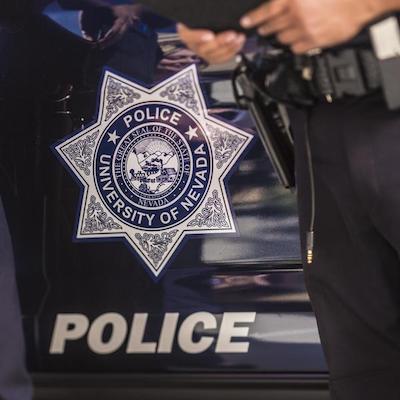From training room to real life: how a University community member's training saved their life during a home invasion
The Active Assailant Training from the University Police Department – Northern Command helped prepare this individual to stay safe
To protect both the anonymity of the individual involved and the integrity of the ongoing investigation, they have requested to remain anonymous in this blog.
We never know when an emergency situation will occur that places our lives in danger.
How do you act? What do you do? The fight or flight reaction is programmed into us as humans. Do you fight or do you flee?
I was confronted with this very situation recently at my home on a peaceful Friday afternoon that has upended my life. I heard someone speaking on a bullhorn outside, got up to look out my front window and didn’t see anything. I then went to my bedroom to see down the street and saw a multitude of police vehicles and a bullhorn being used to tell the suspect to surrender immediately and to come out with his hands up. This apparently didn’t work, because the next thing I heard were gunshots … rapid fire gunshots.
Then a few minutes later (time is fuzzy for me on how long this took) I heard glass breaking at the back of my house. I immediately ran to my bathroom and locked the door behind me. I then paused to listen and had the suspect trying to break into the bathroom where I lay on the floor between the wall, toilet and the door. I did this to make myself as small of a target as possible. I then called 911 and told them who I was, where I was at and that someone had broken into my house. I did not know who broke in but was in the bathroom.
In a few minutes, the 911 dispatcher let me know that it was safe for me to leave because the suspect was now in my backyard by my shed. I ran out of my house with my hands up and towards the police that were surrounding the front of my house. The rest of the day and night is now all over the news with an 8-hour standoff with the suspect who barricaded themselves in my garage and ultimately died there.
Upon reflection of what happened to me between when I ran to the bathroom and when I exited my house, I credit the Active Shooter Training because Chief James had shown us what to do when faced with an active shooter. I knew to find a safe place to barricade myself in and to make myself as small of a target as possible. I looked for something that I could use as weapon but the toilet plunger or toilet brush didn’t seem like good choices, and the 911 dispatcher had also asked me if I had a weapon with me.
My choice to barricade myself in the bathroom saved my life. I was not taken hostage because I didn’t stop to see who had broken in – that would have placed me in further danger. You may think that you would act differently in this situation and maybe you would, but that is unknown until you are faced with the situation. The suspect had broken into two other homes prior to mine and was injured by the time he got to my home. He didn’t shoot at the other victims, only at the police.
According to active shooter training, most shooters will generally shoot straight forward or up not down, so that is why it’s important to make yourself as small of a target as possible. If you have a weapon or can find a weapon that is ideal in case the shooter does break through your barrier, so you have a way to defend yourself. I was lucky I didn’t need to experience that part. I got out alive and material things can be replaced, homes repaired and life will go on.
If you have the opportunity to take the Active Shooter Training, I highly encourage you to do so. You never know when that knowledge will save your life or a loved one’s life.
From the University Police Department – Northern Command:
By: Macie King
An active assailant training encompasses a range of strategies designed to address active assailant situations. This includes incorporating the FBI's comprehensive Run. Hide. Fight. response model, along with fostering a survival mindset among participants.
The training that this individual participated in was conducted after the UNLV campus incident. Following the training, participants engaged in a site safety assessment, during which an officer conducted a thorough review of the workspace, providing valuable insights and recommendations for identifying potential hiding places, escape routes and improvised weapons.
Visit the UPD-Northern Command website to request a training session and learn more about the University Police Department – Northern Command.

















